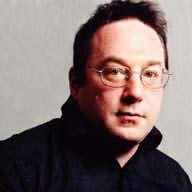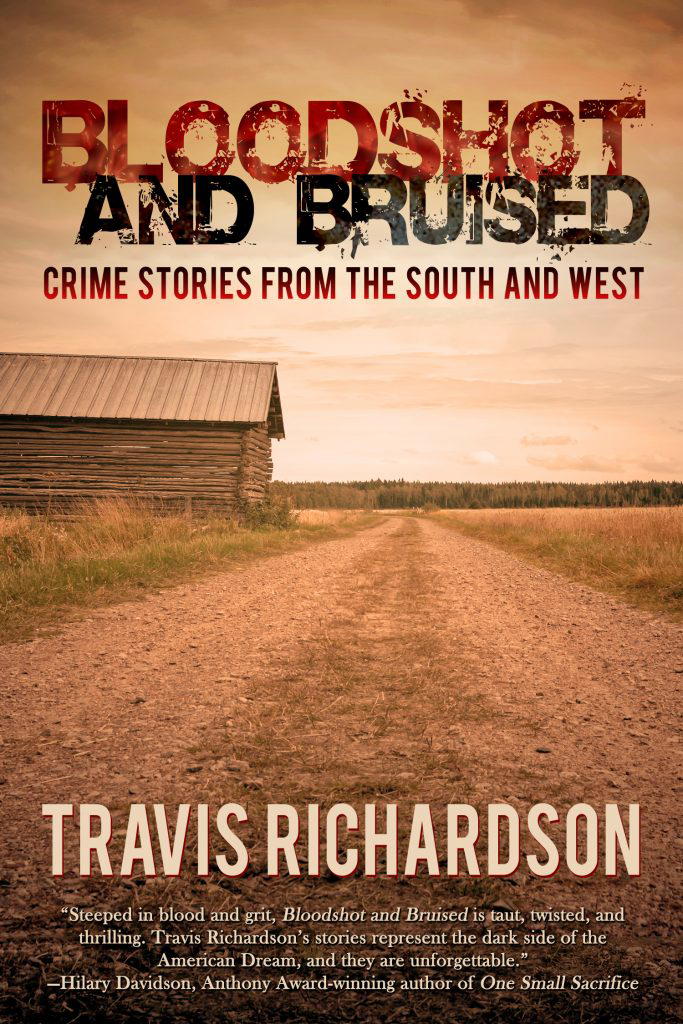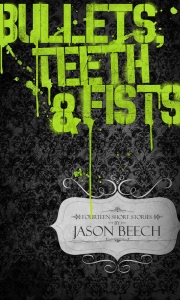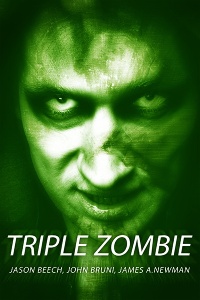The summer has been hot, it’s been busy, it’s been dramatic – and here is Joanne M. Reinbold to open the autumn season of interviews.
I met Joanne at a Noir at the Bar event at a cracking pub in Delaware, where she read a story to chill the heart.
Hi Joanne, what’s The Killings at Badger’s Drift about?
The Killings at Badgers Drift by Caroline Graham is about an elderly woman, Emily Simpson, who, while searching the beech woods near her village for a rare orchid, sees something she wasn’t meant to see. Shocked and outraged, she flees, but not before she’s seen and recognized. The next day, Miss Simpson is found dead in her home by her friend, Lucy Bellringer. The village doctor declares Miss Simpson died of natural causes. Miss Bellringer does not agree, and it is through her persistence that DCI Barnaby and DS Troy become involved. After a proper post mortem, it is discovered that Miss Simpson has been poisoned and her death is declared a murder. The two detectives embark on an investigation wherein they encounter [SPOILERS] deadly blackmail, fraud, suicide, incest, and more vicious murders before unmasking a ruthless killer.
Readers should not assume that because The Killings at Badger’s Drift takes place in a seemingly placid and pleasant village in the English countryside that it is in any way a cozy mystery. Badger’s Drift is a police procedural with a decidedly dark current running through it. It also boasts one of the most brilliantly written prologues I have ever read, as well as having boasting rights for two of the most creepy, eccentric, and sinister characters, the Rainbirds, ever to appear on the page. Another claim to fame is the name Badger’s Drift, quite possibly the most unique village name ever conceived.
The Killings at Badger’s Drift is the basis for the BBC’s Midsomer Murders series, though Caroline Graham wrote only six original stories. After winning the Macavity Award (1989) and receiving nominations for the same honour at the 1989 Anthony Awards and the 1988 Agatha Awards, Badger’s Drift went on to be named one of the “Top 100 Crime Novels of All Time” by the Crime Writers Association.

The set-up has a cozy ring to it. Do you like cozies? What drew you to the book in the first place?
In general, no, I don’t care for cozies. For one thing, I don’t care for the name. I mean, what has “cozy” to do with murder? I recently came across a post on a mystery/crime blog where the author of the blog was discussing The Killings at Badgers Drift, the television version from Midsomer Murders. He was going through the programme scene by scene advising cozy readers on where they’d want to fast-forward through a scene or skip a scene completely. “There’s a crime scene here, buckets of blood—you’ll want to fast forward past that. Skip this scene; nudity and sex warning! Swearing in this bit!” While I found this amusing, I admit, I don’t completely understand it. If the murder and the investigation of the murder is peripheral to all other aspects of the story, why have a murder at all?
That being said, there are things that have become associated with cozies that I do enjoy, such as villages, farms, animals, and old traditions, trades, and folklore. On the flip side of that, I’m also very much interested in true crime, detective fiction, current trends in forensics, policing, and criminal psychology, and for want of a better term, “weird” stuff.
As for what drew me to The Killings at Badgers Drift. It features many of the elements I like in a mystery story: crime in the countryside; tough, clever, resourceful detectives; current forensics, policing, psychology, and social issues (for the time in which it was written), and weird stuff. Another draw is that Badgers Drift is also quite a fine piece of writing with a challenging plot.
Who are the detectives? Are they city men? Do they understand the countryside?
In The Killings at Badger’s Drift the detectives are Detective Chief Inspector Tom Barnaby and Detective Sergeant Gavin Troy. They work out of Causton CID (Criminal Investigative Department) in Causton a town in the county of Midsomer in Southwest England. Caroline Graham based her county of Midsomer on the actual rural county of Somerset also in the Southwest of England. Badger’s Drift was published in 1987 with the story taking place at that time. Today, one might compare the fictional town of Causton with that of the county town of Taunton in Somerset, and Causton CID with the Taunton Police Station, a sub-unit of the Avon and Somerset Police. DCI Barnaby and DS Troy call themselves “country coppers” given that the majority of their investigations take place in the rural areas and villages surrounding Causton. Ms. Graham employs a familiar trope of detective fiction in that Barnaby and Troy exhibit opposite personality traits with Barnaby being the more patient of the two and Troy being more impulsive. Still, they manage to get on well enough to work effectively as a team. Of the two, Barnaby is more conversant in country ways, but neither of them were born or raised in a rural setting.

How does the rural population treat them? Do they see them as a protective duo, or are they seen suspiciously as outsiders?
At the time Badger’s Drift was written many villages still had local police constables who were around, if not every day, then on a regular basis. The people knew them and for the most part they were seen has helpful and protective. CID detectives only appeared when a murder or other major crime had been committed. They most probably had no prior experience or history with the people in the villages and farms and therefore were looked upon with some suspicion, especially since they were the ones probing into people’s personal lives and activities as a means of gathering information and identifying suspects. This is the case in Badger’s Drift. The people who put their hopes in the detectives solving the crime and delivering justice look on them favorably (if they believe the detectives are doing their jobs properly), while others who are or become the focus of their investigations certainly do not, don’t want them around, and are happy to be rid of them as the detectives typically turn up all manner of secrets, scandal, prior bad acts, or simply things folks would rather not be public knowledge.
The doctor concludes Emily Simpson died of natural causes. Does Lucy Bellringer know what Emily saw before she died or is she suspicious of her neighbours?
Miss Bellringer does not know what Emily saw before she died. Her firm belief that something isn’t right in the matter of Emily’s death is based on two things: Emily did a number of things on the day she died that were completely out of character for her, and two, because of Emily’s age, eighty, a death certificate was automatically issued by her doctor without a post-mortem based on his observation of a large bruise on her leg which obviously indicated a fall, the shock of which had been too much for her heart and led to her demise.
Miss Bellringer points out that if Emily had been half that age, questions would have been asked and a post-mortem carried out. When DCI Barnaby suggests that perhaps Emily had taken ill while she was out on her bicycle, Miss Bellringer protests that if that had been the case, Emily surely would have stopped at Miss Bellringer’s cottage on her way home as she would have to pass her gate on the way. And she would have stopped, Miss Bellringer insists because “we’ve been best friends since childhood. She would have stopped, and I would have looked after her.”
She also finds that Emily discovered a rare ghost orchid in the beech woods and marked its location. By doing so Emily won a competition that the two friends have engaged in for many years. The fact that Emily then fails to tell Miss Bellringer that she’d found the ghost orchid first is so out of character as to be unheard of. Shortly, thereafter, Miss Bellringer finds a scrap of paper by Emily’s phone with a name and phone number on it that she recognizes as belonging to the Samaritans. The Samaritans operate a confidential help line for people who need to unburden themselves of worries. Miss Bellringer tells DCI Barnaby that whatever it is that Emily saw—and couldn’t tell her oldest and best friend about—must have been a terrible and unspeakable thing, because nothing else can explain her ringing total strangers.
DCI Barnaby’s response is insightful and sensible: “It was his belief, forged by thirty years of looking and listening, that no one ever acted out of character What most people thought of as character (the accumulation, or lack of, certain social, educational, and material assets) was shallow stuff. Real character was revealed when these accretions were stripped away. Anyone was capable of anything. However, Miss Simpson had done several things on the last day of her life that someone who had known her closely since childhood had never known her to do before. And that was odd. Odd and interesting.”
And so, DCI Barnaby tells Miss Bellringer after she mentions her concern that the police might not take her appeal for an investigation seriously: “…all complaints and inquiries are investigated. Our opinion of their veracity is quite irrelevant.”

Do all the villagers’ accretions of social norms strip at the investigation, even though not all of them are guilty of murder? How is their sense of community affected?
Soon after the detectives begin interviewing residents of the village, two more particularly brutal murders occur. The victims are Iris Rainbird and her son, Dennis, the village undertaker. They are found hacked to death in their cottage. Notebooks are found that reveal the Rainbirds had quite a lucrative sideline in blackmail. From these notebooks the police discover which villagers are being blackmailed and why.
Two of the blackmail victims are Dr. Lassiter and his wife, Barbara. They are being blackmailed because she is a former prostitute who married him for money and privilege. The detectives also learn that the Rainbirds discovered a local woman, Phyllis Cladell, murdered her sister in a supposed hunting accident two years previous. When confronted by the police, Phyllis confesses, is arrested, and later commits suicide in prison. And though there is no reference in the notebook DCI Barnaby and DS Troy reckon the Rainbirds knew who killed Emily Simpson and had a go at blackmailing them with disastrous results.
In the course of the investigation a scheme is uncovered in which Katherine Lacey who is set to marry her benefactor, Henry Trace, a wealthy older man and local landowner, whom she and her brother, Michael, then intend to murder, claim his estate, and leave the country, is discovered.
When the Lacey’s are alerted by a childhood nanny, who DCI Barnaby had contacted, that their incestuous relationship has been discovered, the brother and sister commit double suicide by shotgun.
It’s later found that it was Katherine Lacey and not Phyllis Cladell who murdered Bella Trace, the wife of Katherine’s and Michael’s benefactor. Phyllis really believed she had shot Bella. Due to the commotion and many people moving about and shooting during the hunting party, Phyllis did not realize that someone concealed (Katherine Lacey) in the trees behind her had fired the fatal shot.
By the end of the story, the villagers’ sense of community is shattered. Six deaths and much sordidness uncovered has left the village traumatized, as well as lives ruined, and reputations undone. Perhaps the only positive is that the villagers no longer must fear the tyranny of the blackmailing Rainbirds.

What’s the writing style: noirish or does it reflect (and disguise the evildoings) the rhythms of an English country village?
I would say that Caroline Graham’s writing style in Badger’s Drift is slightly formal, somewhat bucolic, with a touch of humor. While it does reflect the rhythms of the countryside and village life, she does not disguise the evildoings that go on, in fact, her descriptions of murder and mayhem are often quite graphic.
You like English country crime fiction beyond Badger’s Drift – How does the characterization differ from urban noir?
Yes. There’s quite a bit of Britcrime that takes place in the countryside or takes the detectives or other protagonists into the countryside. That’s the case in The Hound of the Baskervilles (1902) an unforgettable crime classic by Sir Arthur Conan Doyle. Holmes and Watson must travel from London to Devonshire to discover who is behind the warnings and/or threats against Sir Henry Baskerville. Much of the story takes place on the ominous Grimpen Moor where one misstep means death in a pool of quicksand and the baleful howl of the hound echoes in the night. Great stuff.
Another of my favorites is the thriller Road Rage (1997) by Ruth Rendell. The main themes of this story—which is based on an actual event—are the environment and environmental activism. A by-pass is planned in the village of Kingsmarkham that will destroy a forest and the habitats of many wild animals. The villagers protest the bypass and disrupt the work on the new run. Soon protestors begin to disappear and another alleged environmental group, Sacred Globe, claims responsibility and threatens to kill the hostages unless plans for the bypass are completely cancelled. Chief Inspector Wexford, whose wife Dora is among the hostages, must discover who Sacred Globe is, then find a way to free the hostages.
Then there’s the classic Hallowe’en Party (1969) by Agatha Christie in which the private detective, Hercule Poirot investigates the murder of a child who has been drowned in an apple-bobbing tub. I want to say right now that I completely disagree with the notion that Agatha Christie wrote cozies. Her stories are some of the darkest mysteries ever conceived, and her characters rival one another in maliciousness, spitefulness, sociopathy, and evil intentions. In Hallowe’en Party Poirot, at the request of his friend, crime writer Ariadne Oliver, travels from London to the village of Woodleigh Common to investigate the child’s murder. The story action centers around the fabulous Quarry Garden created by the horticultural genius, Michael Garfield.
And finally, there’s A Place of Execution (1999) by Val McDermid. The story takes place in 1963 in the village of Scardale in Derbyshire where thirteen-year-old Alison Carter vanishes. Alison’s disappearance is the first case of newly promoted Inspector George Bennett who leads the searches among the limestone dales and caves of the White Peak without success, until decades later when a shocking truth comes to light and he learns the fate of the girl he could not find.
Characterization in these stories differs from urban noir in several ways. Foremost, I would say, the protagonist, whether police, PI, or other, is not an outsider or an outcast. They may have their differences with others, but they remain connected to family, friends, and colleagues, continue to work as a team, have people and institutions they care about and that care for them. There isn’t that pervasive sense of alienation you often find in urban noir protagonists.
Also, urban noir is the realm of the non-hero or anti-hero and no amount of effort on his/her part will change their fate, because they are bound by a fatalistic or nihilistic view of life. They have no hope and suffer no one who does. While the protagonist (heroes/heroines) of other stories are motivated by a need for justice, order, or love, and pursue those ends within the constraints of the law or the boundaries of society, the noir protagonist is more likely to be driven by revenge, greed, or lust and will cross a moral line to get what they want.
And finally, a noir protagonist must have a capacity for violence, as well as often being the victim of violence. Rather than calming things down, they stir things up, and, as a result, noir protagonists rarely achieve a “happy ending” or even a fair one. They often end up with worse than they started with.
Noir protagonists, when written well, are complex and intriguing and their stories can be quite addictive.
What differences do you see between UK and American rural crime novels.
That’s an excellent question, and a difficult one for me to answer. Recently, while reading a book on British cooking, I came across a statement that gave me some insight. The author is making an analogy about food preparation, of course, when he says: “In Britain, we don’t have climate, we have weather.” A rather clever way of saying there is diversity on a small scale, but not so much on a large scale, because the United Kingdom doesn’t cover a large geographic area such as the United States or say, Africa.
So, in the UK you’re not going to have rural crime novels that take place in a desert, such as Tony Hillerman’s Navajo Tribal Police mystery novels that take place in New Mexico in the American Southwest, or in over-heated Lousiana swamplands of the American Deep South where James Lee Burke’s Dave Robicheaux series is set. Also, there’s Sue Henry’s Alaska mysteries that take place in an arctic terrain, and Sharyn McCrumb’s Elizabeth MacPherson mystery series that takes place throughout the massive range of the Appalachian Mountains.
In the UK rural crime novels that I’ve read the characters move around the countryside, in and out of villages and small towns, but there isn’t the kind of long distance travel that often occurs in American rural crime fiction, for example Sue Henry’s Murder on the Iditarod Trail where the story takes place during Alaska’s world-famous Iditarod: a grueling eleven-hundred-mile dogsled race across hazardous Arctic terrain.
I think the “weather and climate” statement also applies to people/characters. In UK rural crime fiction, you’ll find diversity in regional cultures, but again probably not to the degree you’ll find it in American rural crime fiction where there are very distinct cultural differences in communities of Native Americans, Cajuns, Tex Mex, as well as Amish, Shaker, Mormon, and number of other religious sects, to give a few examples.
My choices in American rural crime fiction are often Southern Gothic or Grotesque and include the works of writers such as Flannery O’Connor, William Faulkner, James Dickey, and even Truman Capote’s In Cold Blood.
The rural crime novels of these authors and those mentioned previously differ from what CrimeReads defines as “rural noir” in that they don’t necessarily deal with “the harsh lives of people in remote places and their conflicts with kin or rival clans that go back generations.” Though, I have to say that Wise Blood, a Southern Grotesque, by Flannery O’Connor will give any noir novel of any persuasion a run for its money!

How would you describe your next writing project?
I’m working on the second book in my DCI Rylan Crowe Mysteries series. The first book in the series, Missing, is a novelette, or a “book shot” as they’re called now. The second book is a full length novel, as will be subsequent books in the series, though I may do more “book shots” in between. The second book, like the first, takes place in a village in the English countryside where a brutal murder has been committed and the detectives have a devil of a job getting to the bottom of it. During the course of their investigation, they have to deal with scams targeting the elderly, cybercrime, a rural crime ring, and immigration issues, all of which make sorting out the murder that much more difficult.
Joanne, you’ve been a top guest. Any final words?
Thanks so much for inviting me, Jason. I’ve really enjoyed talking with you. Some final words … I would tell readers to not shy away from trying something new when selecting books. There are so many fine writers that aren’t on best seller lists. Ferreting out new voices and stories is an adventure I’ve always enjoyed and I would encourage folks to give it a try. That, in fact, is how I was introduced to your stories. When I heard you read at a Noir at the Bar in Wilmington, DE. I liked your story and your reading, so I went looking for more of your work. That was a bit of good fortune for me!
Thank you, Joanne.
Joanne expects her new novel to come out in 2020. In the meantime you can buy her novelette, Missing, from Amazon now.

























